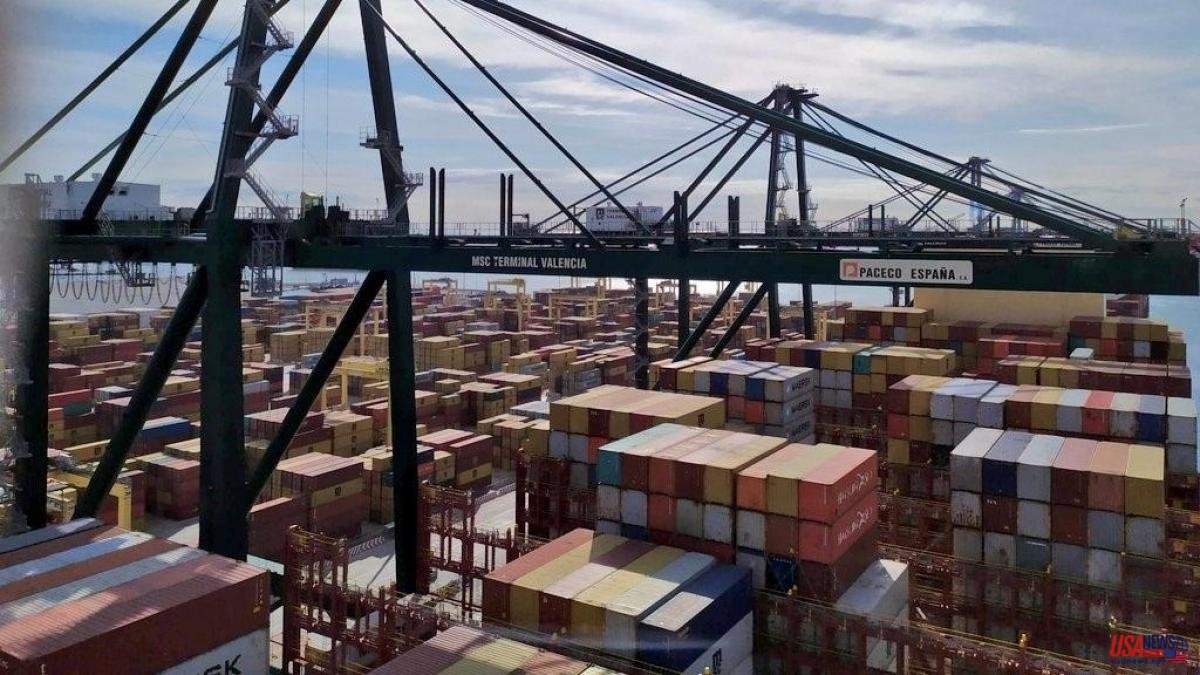The good performance of exports allowed an increase in GDP growth of 1.5% in the second quarter of the year, four tenths above the advanced figure. This is powerful growth thanks to exports of goods and services, which increased by 4.9% compared to the previous quarter, and to a certain extent consumption, although in this case much less than expected, only 1.2%.
At the same time, the National Institute of Statistics (INE) also reviewed the data for the first three months of the year and this time in the opposite direction. It lowered growth by four tenths, so that in that period there was a contraction of the economy of 0.2%. The omicron variant and the transporters' strike took more of a toll than calculated.
Returning to the second quarter, although exports have performed well above expectations, household consumption has not responded as expected. If we look at the first six months of the year, the result is flat. It is true that in the second quarter this domestic consumption has increased by 1.2%, less than half of what the INE calculated in its previous estimate, but also that in the first three months it has fallen by the same percentage.
“I am struck by the weakness of consumption. Since the economic recovery began, domestic consumption has not taken off," says María Jesús Fernández, from Funcas, who also highlights, in the opposite direction, the surprising boost that foreign tourism is giving, with figures in this second quarter that are 30% above the average for 2019, that is, before the pandemic. In any case, with the data from the first two quarters, this economist calculates that annual growth "can reach 4.4%, even if there are some slight falls in the third or fourth quarter."
For his part, José Emilio Bosca, from Fedea, points out that "domestic consumption is not taking off due to inflation and the prevailing uncertainty, people expect a crisis to come, surely the consumption of durable goods is slowing down." On the other hand, the positive aspect lies in the strength of the foreign sector. "Exports are growing and this is good news, especially in an economy in which national consumption is decreasing," says José Emilio Bosca.
The First Vice President and Minister of Economy, Nadia Calviño, stated that the data for the second quarter "confirm the strong economic recovery that intensified at the end of 2021 and the strong growth in 2022."
The truth is that the economy will be put to the test in the coming months, which are forecast to be difficult. The skyrocketing inflation, which has been above 10% for three months, and the uncertainty about the supply of Russian gas are factors that are slowing down economic activity. In addition, there are months of predictable labor conflict, due to the mobilization announced by the unions to pressure the CEOE to negotiate the Agreement for Employment and Collective Bargaining (AENC).
Yesterday, the Independent Authority for Fiscal Responsibility (Airef) pointed out that in the third quarter there would be a slight contraction of the economy; specifically, a reduction of 0.2% of GDP. This is the latest update of the model for forecasting the evolution of GDP in real time (MIPred) which, to date, has 52.4% of the indicators, all of those for July, half of those for August, and none of September; so this forecast can easily vary. If the forecast comes true, it will show that the recovery in tourism during July and August will not have been enough to get the economy to grow.
The INE has justified its revision of the estimate for the second quarter because it did not have the data for May at that time and because the volume of advance information available was less than on previous occasions. On the other hand, it has also revised the growth of previous quarters.
Last week it revised the growth of the economy in 2021, increasing it four tenths to 5.5%, which has now translated into variations in the different quarters. Specifically, it has revised upwards all quarters of 2021.













